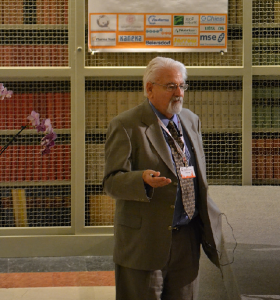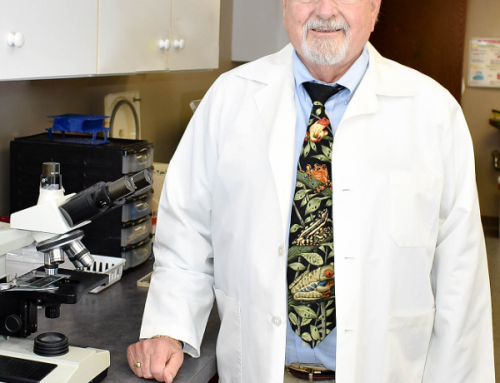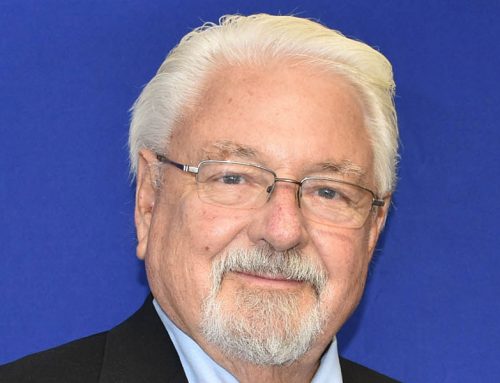
Fatigue. Loss of memory and concentration. Sleep that does not refresh you. Feeling of exhaustion lasting 24 hours or more. These are symptoms of chronic fatigue syndrome. Supplementation with a well-documented Coenzyme Q10 supplement can help.
Some very interesting studies of the treatment of chronic fatigue syndrome patients with oral Coenzyme Q10 supplements have revealed improved symptoms for as long as the treatment continued. What happened in these studies?
The chronic fatigue syndrome patients in these studies had abnormally low plasma and tissue (leg muscle) Coenzyme Q10 concentrations at baseline. Oral administration of a well-formulated Coenzyme Q10 dissolved in vegetable oil resulted in significant increases in plasma and tissue Coenzyme Q10 levels.
With Coenzyme Q10 treatment, the chronic fatigue syndrome patients’ exercise time increased and their recovery time decreased. When the Coenzyme Q10 treatment was stopped, the patients’ condition reverted to the initial baseline values.
Coenzyme Q10 treatment of chronic fatigue syndrome patients
I have already reported the results of studies done by Dr. Michael Maes et al and by Dr. Jesus Castro-Marrero et al. Dr. Maes reported that abnormally low plasma Coenzyme Q10 levels are characteristic for chronic fatigue syndrome patients [Maes]. Dr. Castro-Marrero reported that Coenzyme Q10 treatment in combination with NADH supplementation reduces maximum heart rate and reduced fatigue in chronic fatigue syndrome patients [Castro-Marrero].
Langsjoen and Folkers Coenzyme Q10 study
Doing a literature search, I first found a 1993 journal article by Dr. Per Langsjoen, Dr. Peter Langsjoen, and Dr. Karl Folkers, the grand old man of Coenzyme Q10 research. It was Dr. Folkers who first reported the chemical structure of the Coenzyme Q10 molecule and who first recognized that low Coenzyme Q10 status is associated with heart disease.
Drs. Langsjoen and Folkers reported that the administration of oral Coenzyme Q10 resulted in improvement in the energy levels of the patients in the chronic fatigue syndrome group [Langsjoen]. Super good news.
Judy and Folkers Coenzyme Q10 study
Then, I consulted Dr. William Judy of the SIBR Research Institute. In the 1990s, Dr. Judy and Dr. Folkers studied the effect of Coenzyme Q10 supplementation on chronic fatigue syndrome patients. In one of their studies, they enrolled participants in three groups (12 participants in each group):
- Group A consisted of chronic fatigue syndrome patients who received 100 milligrams of Coenzyme Q10/day for six months.
- Group B consisted of chronic fatigue syndrome patients who received 300 milligrams of Coenzyme Q10/day for six months.
- Group C consisted of healthy participants who received 100 milligrams of a matching placebo for a full year.
The chronic fatigue syndrome patients in the study had all had the disease for 3-7 years. They ranged in age from 31 to 51 years. Patients in groups A and B had significantly lower baseline plasma Coenzyme Q10 than the healthy participants in the control group C.
After six months of Coenzyme Q10 treatment, the participants in groups A and B were crossed over to the placebo supplement for six months. Now, let’s see what happened.
Response to the Coenzyme Q10 treatment
Seven of 12 patients in group A (those getting 100 milligrams of Coenzyme Q10 daily) and 11 of 12 patients in group B (those getting 300 milligrams of Coenzyme Q10 daily) responded well to the Coenzyme Q10 treatment. The researchers noted the response as soon as after the first 30 – 60 days of treatment.
Exercise time
Exercise time at baseline was significantly lower in Groups A and B compared to the control group. Exercise time increased over the six-month treatment period by 125% in group A and 250% in group B. However, the exercise time in the two treatment groups did not reach the level in the control group of healthy participants.
Recovery time
Treatment with Coenzyme Q10 decreased the exercise recovery time in both groups A and B from a mean of 300 minutes down to a mean 120 minutes in group A and 45 minutes in group B.
Again, in neither treatment group did the exercise recovery time get down to the level in the control group of healthy participants (with a mean of 20 minutes).
Plasma and tissue (leg muscle) Coenzyme Q10 levels
With the Coenzyme Q10 treatment, plasma CoQ10 concentrations increased in Group A by 370% and in Group B by 500%. Tissue CoQ10 concentrations increased in group A by 48% and in group B by 60%.
The treatment increased the plasma Coenzyme Q10 levels significantly above the Coenzyme Q10 levels in the unsupplemented participants in the control group.
In group A, the treatment raised the tissue Coenzyme Q10 concentrations to equal the tissue Coenzyme Q10 levels of the control group. In group B group, the treatment raised the tissue CoQ10 level above the level of the control group.
Relapse after the cessation of Coenzyme Q10 treatment
In the crossover phase (six months), Dr. Judy saw a clinical relapse in the patients in Groups A and B. Without the Coenzyme Q10 treatment, the patients in both groups returned to their initial baseline levels and suffered from chronic fatigue syndrome symptoms to the same extent as before the treatment began.

Dr. William Judy, director of the SIBR Research Institute, has many years of experience in clinical research with Coenzyme Q10 and chronic heart failure patients, chronic fatigue syndrome patients, and heart surgery patients.
Dr. Judy’s conclusion
The Coenzyme Q10 treatment cured nothing permanently in these patients. What it appeared to do was to stimulate the cells’ production of needed energy during the period of the Coenzyme Q10 treatment.
Dr. Judy speculated that the Coenzyme Q10 treatment helped to stimulate the recovery of dormant or inactive mitochondria in the tissue cells. This is a slow process. It takes time for the atrophied mitochondria to migrate back in to the muscle tissue cells. And, whenever the Coenzyme Q10 treatment is stopped, then the effect is lost.
Coenzyme Q10 safe and affordable
Fortunately, Coenzyme Q10 supplements are safe and affordable. There is no reason that chronic fatigue syndrome patients (similar to chronic heart failure patients) should not continue to use Coenzyme Q10.
If the chronic fatigue syndrome patients – again, similar to chronic heart failure patients — are taking a statin medication, then they certainly should talk with a cardiologist about the extent to which statin medications inhibit the body’s synthesis of Coenzyme Q10, which is an essential co-factor in the cellular process of energy production.
Sources:
Alehagen, U., Aaseth, J., & Johansson, P. (2015). Reduced Cardiovascular Mortality 10 Years after Supplementation with Selenium and Coenzyme Q10 for Four Years: Follow-Up Results of a Prospective Randomized Double-Blind Placebo-Controlled Trial in Elderly Citizens. Plos One, 10(12), e0141641.
Castro-Marrero, J., Sáez-Francàs, N., Segundo, M. J., Calvo, N., Faro, M., Aliste, L., & Alegre, J. (2016). Effect of coenzyme Q10 plus nicotinamide adenine dinucleotide supplementation on maximum heart rate after exercise testing in chronic fatigue syndrome – A randomized, controlled, double-blind trial. Clinical Nutrition (Edinburgh, Scotland), 35(4), 826-834.
Judy, W. V. & Folkers, K. (1993). Management of chronic fatigue syndrome patients with CoQ10. 8th. Intl. Symp. Biomed. and Clin. Aspects of CoQ, 55.
Langsjoen, P. H., Langsjoen, P. H., & Folkers, K. (1993). Isolated diastolic dysfunction of the myocardium and its response to CoQ10 treatment. The Clinical Investigator, 71(8 Suppl), S140-S144.
Maes, M., Mihaylova, I., Kubera, M., Uytterhoeven, M., Vrydags, N., & Bosmans, E. (2009). Coenzyme Q10 deficiency in myalgic encephalomyelitis/chronic fatigue syndrome (ME/CFS) is related to fatigue, autonomic and neurocognitive symptoms and is another risk factor explaining the early mortality in ME/CFS due to cardiovascular disorder. Neuro Endocrinology Letters, 30(4), 470-476.
Mayo Clinic. (2017). Diseases and conditions: Chronic fatigue syndrome. Patient Care and Health Information. Retrieved from http://www.mayoclinic.org/diseases-conditions/chronic-fatigue-syndrome/basics/definition/con-20022009.
Mortensen, S. A., Rosenfeldt, F., Kumar, A., Dolliner, P., Filipiak, K. J., Pella, D., & Littarru, G. P. (2014). The effect of coenzyme Q10 on morbidity and mortality in chronic heart failure: results from Q-SYMBIO: a randomized double-blind trial. JACC. Heart Failure, 2(6), 641-649.
Disclaimer: The information reported in this article is not intended as medical advice and should not be regarded as such.









[…] Evidence from Dr. Judy’s studies of chronic fatigue syndrome To summarize what we have learned about Coenzyme Q10 and mitochondrial malfunction, I want to review the evidence from Dr. Judy’s study of chronic fatigue syndrome patients: […]